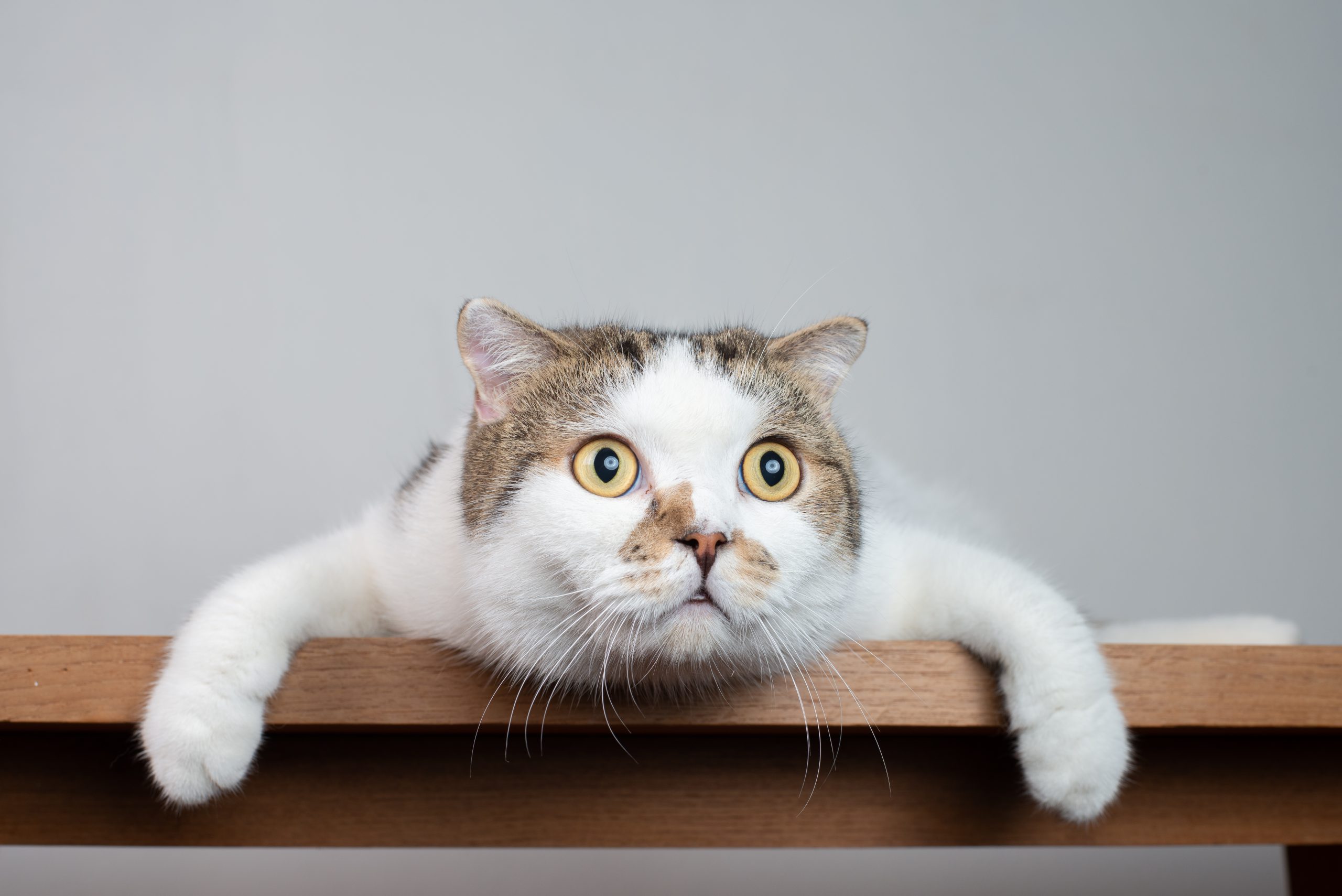As vets and nurses, we all know that sometimes cats don’t make the easiest patients. Restraint can be difficult (for the cats and for us), administering medication isn’t always a walk in the park and stressed cats can pose a risk to our health (If you have ever been bitten by a cat, you will know that all too well!)
A 2011 study showed around 40% of cats in the USA hadn’t been to the vets in the past year. The number one reason given was it was too stressful (for the cats and their owners!).¹ So this is a crucial topic to address – both from an emotional wellbeing level, but also a physical one.
Luckily, there are lots of things we can do to make the visit more pleasant for all involved.
The journey in – where the stress begins
Being caught, popped in (all too often a poorly designed) cat box and transported to the vets will often start a stress response in our patients before they have entered the building. Preventative healthcare advice (which we will discuss later) is key!
Waiting room – where the stress grows
Rather than letting the fear grow in the waiting room, we should be doing all we to reduce it by:
- Providing separate cat and dog waiting rooms (or a barrier if this is not possible).
- Providing perches for cat boxes to sit on up off the ground.
- Considering ‘cat only’ appointment times so no dogs are in the clinic.
- Scheduling anxious cat appointments so the vet has more time and ideally the cat doesn’t have to wait.
- Spraying towels with Feliway™ for owners to place over their cat’s box (wash after every use).²
- Using soft classical music as background noise.
Consultation room – often where the stress rapidly escalates
Ideally we should be assessing each animal’s emotional state as soon as they enter the consultation room – (similar to a body condition score) and mark this on their chart. This will inform you of what you should be doing next.
If we ignore / normalise a stressed animal to the owner, we are making them think this behaviour is not an issue and can be ignored. This is both a safety concern (if animals feel they need to escalate their behaviour to distance increasing behaviours i.e. aggression), and also a welfare concern.³
If the cat is stressed and what we are going to do is non essential, consider rebooking another time. Discuss desensitisation and counter conditioning with the owner and think about the use of pre-visit medications. If what we need to do is essential but the cat is stressed, consider sedation.
Other top tips for inside the consultation room are:
- Ensuring all surfaces are non slip (Bambi legs cause panic in all cats).
- Allowing the cat somewhere to hide (e.g. towel / bottom of cat carrier).
- Considering smells. It may seem obvious, but if you have just emptied anal glands in the room, handled a very fractious cat or used a strong smelling disinfectant – give the room some time to air before seeing the next cat.
- Allowing the cat control over their environment (the choice to move) as you examine it.
- Involving the owners to talk to their cats/ stroke if appropriate.
Hospital patients – where stress is maintained or even increased
High levels of stress have wide ranging effects on the body – for our hospital patients most importantly stress reduces immune function and wound healing.³ So for emotional and physical wellbeing we need to do all we can to reduce it.
- Set up a separate cat ward, away from dogs and excessive noise.
- Keep the lighting dim and music soft.
- Ensure cages have aired after the use of strong smelling disinfectant.
- Provide the cats with control over their environment – somewhere to perch and hide is a great place to start.⁴
- Plan your procedures to do any fearful patients first and discharge early if appropriate.
- Plan each procedure carefully – start with the least stressful thing and group interventions into manageable chunks. Allow cats breaks between procedures. Don’t forget EMLA is your friend and cats have more veins than just a jugular!
- If possible don’t change their diet while they are in hospital and encourage things smelling of home e.g. towels for in patients.
- Remember the magic triangle for cage set up – food, water and litter placed at each point.
- Consider your patient when handling them – older cats may well be arthritic and common handling techniques can cause significant discomfort.
Always consider the use of anxiolytics – remember, cortisol increases short term memory formation. If you stress that cat they will remember for next time!!!!!
Prevention is better than cure
The final thing I want to touch upon is preventative emotional healthcare for our feline patients. Puppy socialisation is a hot topic and something that as a profession we have improved on leaps and bounds. However, cats are lagging behind.
Educating clients on how to get kittens used to handling – for claw clips, medicating and for injections is vital to ensure cooperative healthcare throughout their lives. They should be buying the correct size cat carriers, which open at the top, are solid and have a non slip floor. Then they should be showing the kittens entering the carrier is actually wonderful and not scary at all! If you take your time to do this, future you will thank you for it!!

Dr Julie Ashton, BSc (Hons), BVSc, MANZCVs (Veterinary Behaviour), CCAB, MRCVS
Dr Julie graduated from Bristol Vet School in 2009 with a BVSc (Veterinary Science) and a BSc (Hons) in Animal Behaviour and Welfare. She worked for a couple of years in a busy small animal practice in North London before moving to Sydney. In 2014, she became a member of the Australian and New Zealand College of Vet Scientists in Veterinary Behaviour – and the same year she set up Life on Four Legs, an approachable, science based Veterinary Referral consultation service.
In 2019, she relocated back to London and restarted Life on Four Legs in the UK. She accepts Behaviour Referrals from Hertfordshire, London and surrounds. She is an ASAB accredited Clinical Animal Behaviourist. She is a full member of the Association of the Pet Behaviour Councillors and an ABTC accredited Veterinary Behaviourist and Clinical Animal Behaviourist.
www.lifeonfourlegs.co.uk
References:
- Executive summary of the Bayer Veterinary Care Usage Study. Volk et al., JAVMA, 2011, 238 (10): 1275-82.
- Improving the feline veterinary consultation: the usefulness of Feliway Spray in reducing cats’ stress. Pereira et al., J Feline Med Surg, Aug 2016; 18 (12): 959-964
- The physiologic effects of fear – Dr Todd Jenkins, Aug 2014, https://www.dvm360.com/view/physiologic-effects-fear)
- The effect of hiding enrichment on stress levels and behaviour of domestic cats (Felis sylvestris
- catus) in a shelter setting and the implications for adoption potential. Kry & Casey, Animal Welfare, 2007; 16:375-383
Recommended reading:
Minimising stress for Patients in Vet Hospitals: Why is it important and what can be done about it? J Lloyd, Vet Sci, 2017; 4(2):22
The Behaviour of the Domestic Cat, 2nd edition (2012) John Bradshaw, Rachel Casey and Sarah Brown.
Feline Behavioural Health and Welfare, (2015) Ilona Rodan and Sarah Heath
Low Stress Handling, Restraint and Behaviour Modification, (2009) Sophia Yin.
